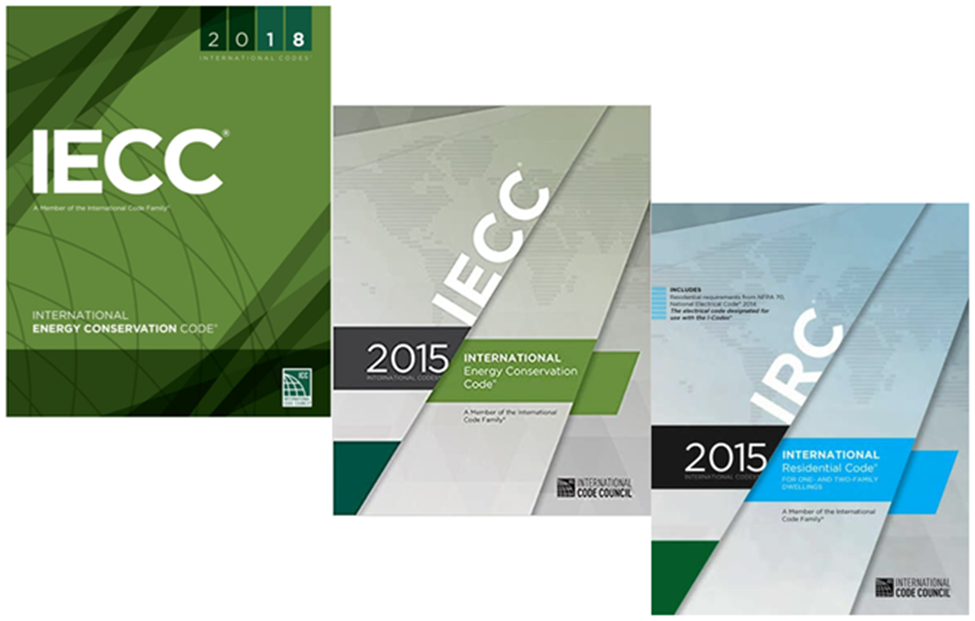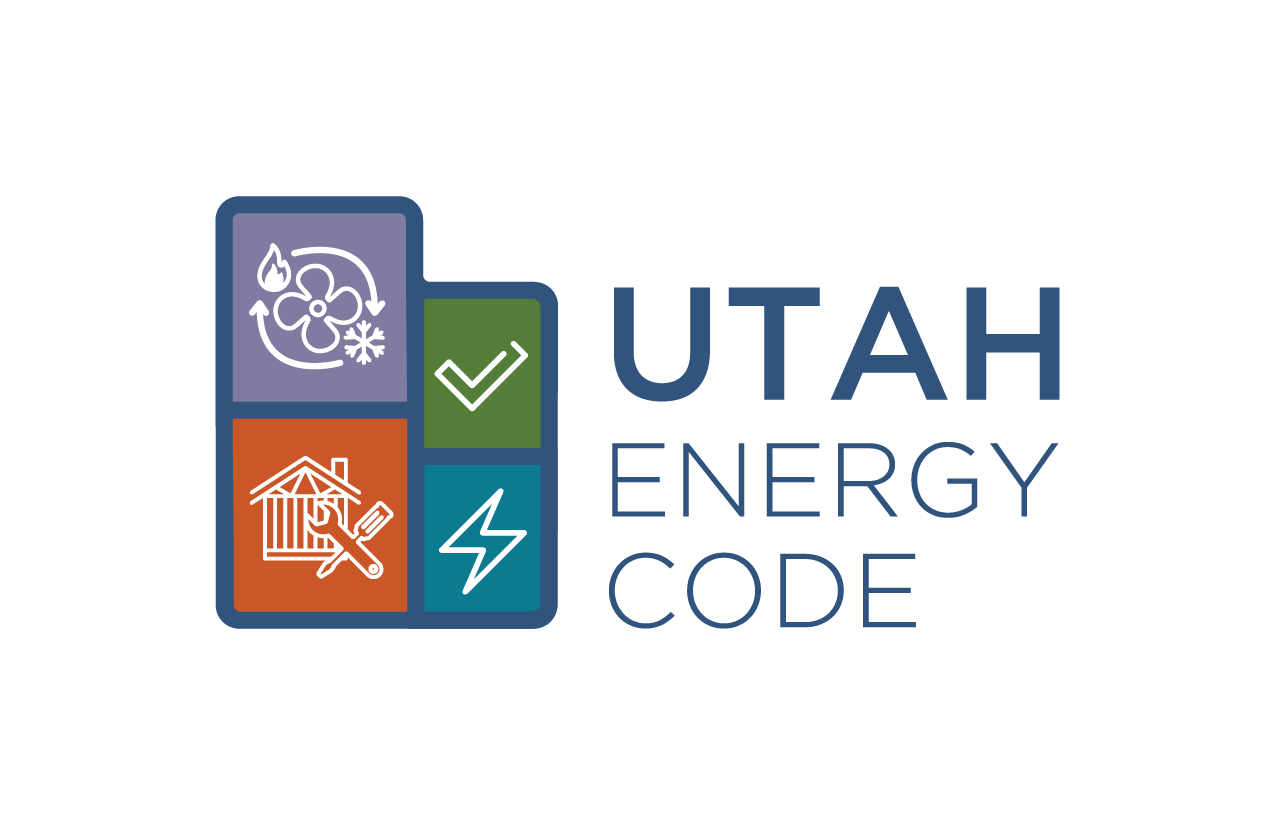
Introduction to the Energy Code – Is My Project Commercial or Residential?
There are differences between residential and commercial projects, although sometimes these differences can be confusing and hard to discern. The International Energy Conservation Code (IECC) includes separate provisions for residential buildings and commercial buildings. Often confusing is the significant difference in defining Residential Buildings in the IECC, when compared to the other commonly adopted International Code Council (ICC) Codes.
Beginning with a review of the general construction codes adopted in Utah by (see link below), we find the following in the Utah Construction and Fire Codes Act:
-
-
- 2018 IBC (International Building Code) including Appendices C and J
- 2015 IRC (International Residential Code) including Appendix E
- Appendix Q of the 2018 IRC (tiny houses)
- 2018 IPC (International Plumbing Code)
- 2018 IMC (International Mechanical Code)
- 2018 IFGC (International Fuel Gas Code)
- 2020 NEC (National Electrical Code) issued by the National Fire Protection Association
- Residential provisions of the 2015 edition of the International Energy Conservation Code (IECC) which is the same text as Chapter 11 in the IRC
- Commercial provisions of the 2018 edition of the International Energy Conservation Code (IECC)
- 2018 IEBC (International Existing Building Code)
- Residential Provisions of the 2018 ISPSA (International Swimming Pool and Spa Code)
- Plus, other less used specific codes including those for the abatement of hazardous buildings, Housing and Urban Development (HUD) codes for manufactured homes, and wildland interface codes.
-
Many of the above codes include state amendments, that are identified in the Utah Construction and Fire Codes act. See this link to the most current edition: https://le.utah.gov/xcode/Title15a/15a.html

The front cover of the IRC defines its scope as one-and two-family dwelling. This code is in a single, comprehensive volume that encompasses one- and two-family dwellings and all townhouses up to three stories above grade. Chapter 11 in the IRC is a duplicate of the IECC- Residential Provisions as needed to provide energy requirements in the IRC single volume code.
A townhouse is defined as a single-family dwelling unit without a building separation distance at the property lines, constructed in a group of three or more attached units in which each unit extends from foundation to roof and with a yard or public way on two sides. A townhouse project may have many single attached townhouse units; however, each is considered a single-family dwelling (SFD). The IRC regulates accessory structures such as garages and sheds on the same lot.
All other buildings fall under the regulations of the ‘commercial’ codes; the IBC, IPC, IMC, IFGC, and NEC. These commercial codes also apply to residential apartments greater than a duplex, condominiums, boarding houses, hotels, and motels, any residential R occupancies except for those regulated by the IRC, as defined above.
Notice the list of commercial codes in the above paragraph omits the IECC, the energy code. With the IECC we have a different set of rules. The IECC – Residential Provisions apply to any residential dwellings up to three stories above grade, including one- and two-family dwellings and townhouses. Adding to the complexity, any transient R-1 occupancies of any height, hotels, motels, etc., limited to a maximum of 30-day occupancy, must comply with the commercial provisions of the IECC. Repeating this for clarity, an apartment building or condominium project with buildings three stories or less above grade must comply with the commercial building, plumbing, mechanical, fuel gas, and electrical codes, the IBC, IPC, IMC, IFGC, and NEC; however, must comply with the residential provisions of the IECC. Where the apartment or condominium building is four stories or higher, the IECC Commercial Provisions apply. This may be confusing, resulting in several questions.
Please consider these FAQs:
-
- I have an apartment project built on a podium slab, with underground parking. Do I count the parking level in determining if the application code is residential or commercial IECC?
No, you count only the levels above grade.
-
- I have a mixed-use building with retail on level one and apartments above on levels two and three. Which energy code do I use for this project?
This is a unique situation, where two energy codes apply. Use the IECC Commercial Provisions for levels one and IECC Residential Provisions for levels two and three.
-
- I have a multiple-building apartment project which includes both three- and four-story buildings, with a clubhouse and pool in the center of the project. Which energy codes do I use?
This can create serious confusion, especially as the Utah IECC Residential Provisions are heavily amended, resulting in differing insulation and air seal requirements between the three and four-story buildings. The three-story buildings must comply with the IECC residential provisions. The four-story buildings, plus the clubhouse and pool must comply with the IECC commercial provisions. The exterior lighting for the project must comply with the Exterior Lighting requirements in IECC Commercial Provisions.
-
- A follow-up question to #3 above – I have three, four, and five-story apartment buildings on a project. Can I use the most restrictive insulation requirements for all buildings?
Yes, the IECC is a minimum code. It’s perfectly acceptable to exceed the minimum requirements.
-
- What are some of the significant differences between the IECC Commercial and Residential provisions?
The IECC Residential Provisions primarily focus on building envelope insulation and air sealing. It also includes limited requirements on duct sealing and insulation, HVAC design, HVAC controls, hot water piping insulation and controls, snow melt system controls, pool controls, and lighting efficacy requirements.
Because commercial buildings, often due to the type of use, experience high utility expenses, the IECC Commercial Provisions include detailed requirements for the thermal envelope, mechanical systems, service water heating, electrical power, and lighting systems, and maintenance/commission requirements.
-
- It appears the 2018 IECC Commercial Provisions are the current Utah code: however, the 2015 IECC Residential Provisions apply. Why?
The Utah Legislature with the adoption of the 2015 residential codes also modified the residential code adoption cycle, skipping every other edition of the IRC. At the time of the 2015 Code adoption on July 1, 2016, the next expected adoption was July 1, 2022, a six-year code cycle: however, in 2021, the Legislature deferred the review of the 2021 code for another year, with the earliest expected adoption on July 1, 2023.
Currently, Advisory Committees to the Uniform Building Codes Commission (UBCC) recently completed the review of each of the 2021 codes and submitted recommendations to the UBCC. This Commission will then prepare the proposal for presentation to the Utah Legislature Business and Labor Committee. The Legislature will then consider these recommendations in the 2023 Session, with possible adoption effective July 1, 2023. Dr. Energy expects all 2021 I-codes including the IRC will be adopted with amendments in 2023.

0 Comments